








Energy savings up to 70% Even compared to high efficiency gas & air conditioning.

Environmentally friendly Recognized by the EPA and the Department of Energy.
Longer lifespan
25 year average for units and up to 100 years for loops.
Added resale value
Energy efficiency is a selling advantage for your home.

Delphi Blue Fox Htg & Clg
(765) 822-2200
bluefoxhvac.com
Farmersburg
Heady Htg & Clg
(812) 696-2396
Flora Camflo Htg & Clg
(574) 967-4200
camfloheatingandcooling.com
Fort Wayne Masters Htg & Clg, Inc.
(866) 824-4328
mastersingeothermal.com
Greensburg Wallpe Htg & Clg
(812) 663-7252
wallpegeothermal.com
Indianapolis Masters Htg & Clg by Van Valer, Inc. (317) 881-9074
mastersingeothermal.com
Jasper Hulsman Refrigeration, Inc.
(812) 634-1492
hulsmanrefrigeration.com
Laotto T&T Plbg, Htg, A/C & Geothermal (260) 200-4003
tt-ph.com
Lebanon Blue Fox Htg & Clg 765-859-0880 bluefoxhvac.com
North Vernon Air One Htg & Clg, Inc. (888) 346-1790 aironehvac.com
Ossian Collier’s Comfort Services (260) 622-6622 collierscomfort.com
Schererville AAA Services, Inc. (219) 472-8645 aaaserviceshvac.com
Waterloo Gibson’s Htg & Plbg, Inc. (888) 754-1668
gibsonsgeothermal.com
West Lafayette Blue Fox Htg & Clg (765) 252-0051
bluefoxhvac.com
Westfield Precision Comfort Systems, Inc. (800) 377-5667
precisioncomfort.com
Warsaw Colliers Htg & Air Conditioning (574) 269-3393
trustcolliers.com
Amber Knight is the creative manager of Indiana Electric Cooperatives and is a crucial component of the Indiana Connection team. She oversees the entire design of the magazine, including the cover, and has an unmatched eye for detail. Here’s more about her:

As creative manager, I ensure brand consistency and design excellence at IEC and Indiana Connection. I also lead our Creative Services Program, where our team assists co-ops throughout the state with their design needs, from graphic design and logos to photography and more. I love working with the IEC team and co-op communicators to deliver beautiful work. My job never feels like work!
Three facts about Amber:
• My creative passion began in high school as a member of the newspaper staff. I earned my bachelor’s degree in communication studies from Ball State University and have been doing creative work in marketing and communication ever since.
• Since becoming a homeowner, I’ve done a ton of home improvement projects. I have painted kitchen cabinets, installed flooring, built shelving for a bookcase and even constructed a large media cabinet. I’ve learned that you can do a lot with power tools and patience.
• I always have a book nearby. I enjoy getting lost in a good thriller or romantic comedy, and I love supporting indie authors. I read 58 books in 2022 and am on track to read even more this year!
Amber is brilliant, funny, diligent and all-around amazing. She brings terrific ideas, enthusiasm and inspiration to the team on a daily basis, and the magazine would not be the same without her.
Stephanie Groves Editor sgroves@indianaec.orgWin Amber’s favorite DIY tool: a BLACK+DECKER® cordless screwdriver!
On the menu: December: Recipes using candy, deadline October 1. If we publish your recipe on our food pages, we’ll send you a $10 gift card.
Giveaway: Win a BLACK+DECKER cordless screwdriver with pivoting handle! Visit indianaconnection.org/talk-to-us/contests or send your contact information to the address below. The deadline to enter is August 31.
Three ways to contact us: To send us recipes, photos, event listings, letters and entries for gift drawings, please use the forms on our website indianaconnection.org; email info@indianaconnection.org; or send to Indiana Connection, 8888 Keystone Crossing, Suite 1600, Indianapolis, IN 46240-4606.
VOLUME 73 • NUMBER 2
ISSN 0745-4651 • USPS 262-340
Published monthly by Indiana Electric Cooperatives
Indiana Connection is for and about members of Indiana’s locally-owned, not-for-profit electric cooperatives. It helps consumers use electricity safely and efficiently; understand energy issues; connect with their co-op; and celebrate life in Indiana. Over 311,000 residents and businesses receive the magazine as part of their electric co-op membership. Member’s cost per issue is approximately 32 cents, plus postage.
CONTACT US:
8888 Keystone Crossing, Suite 1600 Indianapolis, IN 46240-4606 317-487-2220
info@indianaconnection.org
IndianaConnection.org
INDIANA ELECTRIC COOPERATIVES OFFICERS:
Randy Kleaving President
Steve McMichael Vice President
Dr. Richard Leeper Secretary/Treasurer
John Cassady CEO
EDITORIAL STAFF:
Stephanie Groves Editor
Richard George Biever Senior Editor
Holly Huffman Communication Support Specialist
Lauren Carman Communication Manager
Kiley Lipps Graphic Designer
Ashley Curry Production and Design Coordinator
Amber Knight Creative Manager
Mandy Barth Vice President of Communication
ADVERTISING:
American MainStreet Publications
Cheryl Solomon, local ad representative; 512-441-5200; amp.coop
Crosshair Media 502-216-8537; crosshairmedia.net
Paid advertisements are not endorsements by any electric cooperative or this publication.
UNSOLICITED MATERIAL:
Indiana Connection does not use unsolicited freelance manuscripts or photographs and assumes no responsibility for the safekeeping or return of unsolicited material.
SUBSCRIPTIONS:
$12 for individuals not subscribing through participating REMCs/RECs.
CHANGE OF ADDRESS:
If you receive Indiana Connection through your electric co-op membership, report address changes to your local co-op.
POSTAGE:
Periodicals postage paid at Indianapolis, Indiana, and at additional mailing offices.
POSTMASTER:
Send change of address to: Indiana Connection, 8888 Keystone Crossing, Suite 1600, Indianapolis, IN 46240-4606. Include key number.
No portion of Indiana Connection may be reproduced without permission of the editor.




30

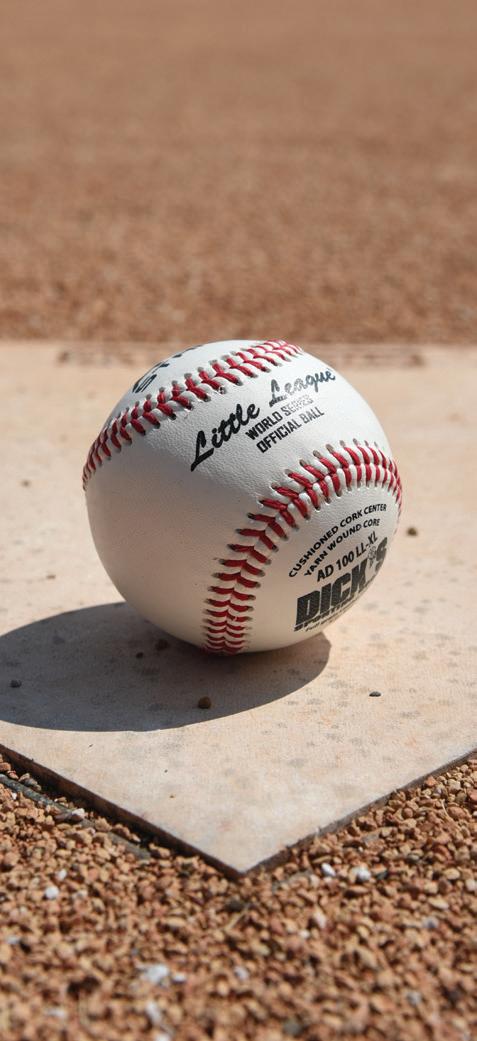

Shane Smith of Utilities District of Western Indiana REMC (NOT IN ALL
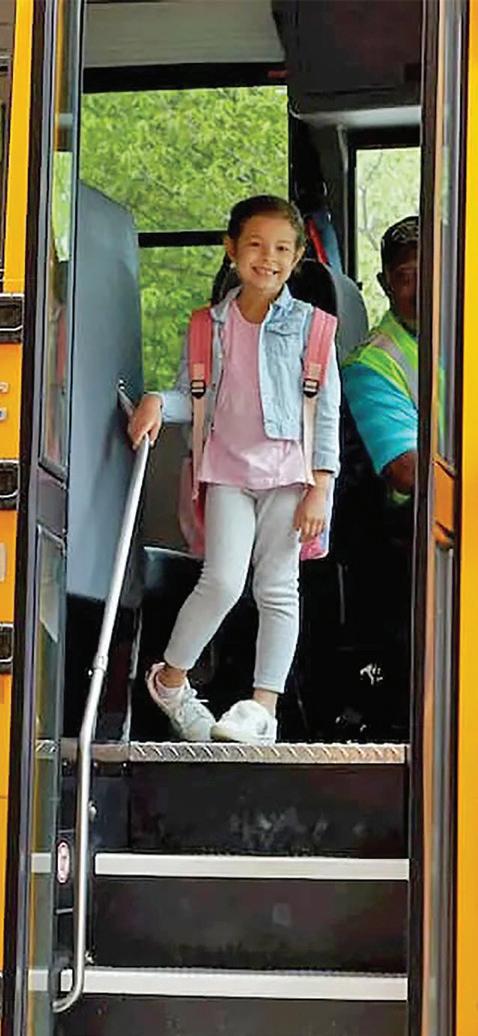
Indiana’s Jaykob Troutwine from Hagerstown touches home plate before the tag for the Great Lakes during Little League Baseball’s World Series last August in Williamsport, Pennsylvania. Which state will represent the Great Lakes Region at the World Series this year will be determined at the regional tournament in Whitestown, Aug. 5-9.

www.duboisrec.com

CONTACT US
Office: 812-482-5454
Billing Dept.: 812-482-1664
Operations Dept.: 812-482-1188
After Hours: 812-482-5455
Fax: 812-482-7015
CEO AND GENERAL MANAGER
Joe Henson
OFFICE HOURS
7 a.m.–4 p.m., Monday-Friday
7 a.m.–3:30 p.m. for Line Dept.
STREET ADDRESS 1400 Energy Drive Jasper, IN 47546
MAILING ADDRESS
P.O. Box 610 Jasper, IN 47547-0610
EMERGENCY POWER OUTAGES
To report service interruptions, call: 812-482-5454 (during regular hours) or 812-482-5455 (after hours) day or night. Please have your account number ready when reporting outages.
BOARD OF DIRECTORS
Brad Knies, President
Richard A. Wendholt, Vice President
Randall L. Stemle, Secretary-Treasurer

Mark Montgomery
Andy Schwenk
Steve Speedy
David Rudolph
KEY STAFF
Craig Adams
Manager of Finance
Matt Brames
Manager of Engineering
Greg Dilger Engineering Project Manager
Ruth Hopf
Billing Supervisor
Patrick Lichlyter
Manager of Operations
CUSTOMER SERVICES
Budget billing SmartHub
Pay by phone 24/7
Drive-thru window
Night depository
Medical account watch This
Typically, we think of storm season happening during the spring months. This summer, however, it seems like our line crews have been making repairs and restoring power after wind storms more frequently than usual. That makes me think it’s a good time to review the steps that Dubois REC takes to restore power after an outage.
When a storm causes widespread damage, electricity cannot be restored with the flip of a switch. Here’s how it’s done methodically, efficiently and safely.
Every electric cooperative follows a basic principle when it comes to restoring power — priority is given to the lines that get the most consumers back in service the quickest. Here’s a basic order of repair:
1. TRANSMISSION LINES
These high-voltage lines carry electricity from generating plants to substations (or between substations). Since tens of thousands of people could be served by one transmission line, damage here needs to be taken care of first.
2. SUBSTATIONS
These electrical facilities contain equipment that switch or regulate the voltage of electricity. They lower the voltage from the transmission lines so the electricity can be transmitted through the distribution lines. Problems here can affect thousands of consumers.
3. MAIN DISTRIBUTION LINES
You see these along roadways. They carry electricity from the substations to groups of consumers, like towns or housing developments.
4. TAP LINES
These lines run from the main distribution lines to utility poles and underground transformers outside houses or buildings.
5. INDIVIDUAL SERVICE
These lines run from the transformer on the pole along the road or street or underground box to the consumer’s electric meter on the side of the home or business.
We know electricity is a necessity in today’s powered world. You can rest assured that Dubois REC has a plan in place to make recovery after an outage as quick and as safe as possible.
If you or a loved one has medical equipment that must have electric power at all times, please consider investing in a generator that can power the equipment during an outage. You can also contact our office to be placed on a “medical priority list” which does NOT guarantee uninterrupted power, but lets us know that someone in your household depends on medical equipment.
JOE HENSON CEO and General ManagerService charge
Single-phase .................................................. $31
Three-phase $47
Energy charge
The first 500 kWh at $.10522/kWh
The next 2,500 kWh at $.09772/kWh
All remaining kWh at ......................$.09462/kWh
Power cost tracker
All rate classes
All kWh at $0.019/kWh
Security light
If you have a security light, add: 175-watt mercury vapor $8.32/month
100-watt sodium vapor $7.50/month
100-watt metal halide ...................... $8.75/month
70-watt LED $7.50/month
Electric bills are due by the 20th of each month. Members who pay by the 15th will be entered in the monthly drawing for a $50 bill credit.
(See details at right.)
Visit www.duboisrec.com for easy ways to pay your electric bill online.
It’s easy to enter our monthly $50 drawing! All Dubois REC members who pay their bill by the 15th of the month, using any payment option, will be automatically entered in the $50 monthly drawing. Members who pay by ACH/bank draft and recurring payments are also automatically included in the drawing. (Delinquent payments are not eligible.)
The winner will be notified, and his or her name will be published here.
JUNE’S WINNER: Carolyn Harris, Huntingburg
• Items accepted: computers, monitors, laptops, tablets, modems, VCRs, DVRs, phones, fax machines, printers, iPods and MP3 players for recycling.
• There is a limit of 100 pounds of paper per member for shredding.
• NOTE: We CANNOT accept televisions for recycling.
his late 60s, Dubois REC was among the clients he kept to the end.
“Art is a true professional and gentleman,” said Joe Henson, CEO and general manager of Dubois REC.
“When they were proposing the rural electric act,” said his son, “he was involved. And he was the one who introduced the act in the state legislature. He was in it early.”
“I was raised on history,” said Arthur Nordhoff Jr., the Dubois County historian and long-time attorney. But the 83-year-old not only was raised on history, he and his father, Arthur Nordhoff Sr., also a Dubois County attorney, lived it, helped make it and wrote much of it in lawyerly detail.
As attorneys for the county government, county school corporations, Dubois REC and so many other organizations and businesses in the area, the Nordhoffs — Jr. and Sr. — were instrumental in drafting and overseeing vast changes in how folks have lived their lives over the past 90 years. From rural electrification to school consolidations, from electric service territorial protection to broadband implementation, the Nordhoffs drafted the documents, crossed the T’s and dotted the I’s that brought so much change for the better to the people of Dubois County, the surrounding counties and the state.
At the end of July, Nordhoff Jr. retired after almost 60 years as an attorney, officially bringing a close to his law practice and distinguished career. While he’d been slowly relinquishing some of his clientele since he was in
“The wisdom he has brought, his calm demeanor, his counsel and his humor has helped Dubois REC find success and keep the co-op on a firm foundation. For almost 85 years, the name ‘Arthur Nordhoff’ has served the members of Dubois REC faithfully and continuously. The legacy of both Art and his father will continue on for as long as there is a Dubois REC.”
Arthur Nordhoff Sr. was named the first attorney for Dubois REC when the electric cooperative organized in 1940, coincidentally the year Nordhoff Jr. was born. But his influence on rural electrification began before Dubois REC was even a flicker in the farmers’ eyes.
In 1934, Nordhoff Sr. was a young state representative in the Indiana General Assembly. As the legislative session began in 1935, Nordhoff was made chair of the County and Township Business Committee. Into that committee came an innovative bill that became known as the “Indiana REMC Act.” The act established a legal means for rural electric membership corporations (cooperatives) to organize and provide electric service to the unserved areas of rural Indiana. At the time, only 10% of the nation’s farms and rural areas had electricity. As committee chair, he had an active role in the writing of the bill.
The bill unanimously passed both houses of the General Assembly and was signed into law in March 1935. This was two months before President Franklin D. Roosevelt created the federal Rural Electrification Administration to help bring power into all of rural America.
“He knew the need,” Nordhoff Jr. noted, “the dire need the people of the county had for an electric co-op.”
Nordhoff Sr. left the legislature after that term, joined with his brother, also an attorney, and began practicing law full time in Dubois County. Soon, Nordhoff Sr. was a go-to guy for so many of the county’s institutions.

continued on page 29


Four local students were selected to represent Dubois REC in amazing summer experiences. Bryce Rasche, a student at Cedar Crest Intermediate School, and Maggie Verkamp, a homeschooled student, attended Camp Kilowatt, June 7-10, at Camp Tecumseh in Brookston. This event is for students entering the seventh grade in the fall and combines traditional camp activities with electrical safety lessons and education about electric cooperatives.

Abagaile Bromm of Jasper High School and Carson Bromm of Southridge High School joined more than 70 other students sponsored by Indiana’s electric co-ops on a weeklong tour of our nation’s capital. During Indiana Youth Tour to D.C., students visited monuments, museums and memorials and also had the opportunity to meet with Congressional representatives and their staff.









While electric vehicles are collectively trying to find a foothold with individual consumers, there’s at least one EV market that seems to be firing on all cylinders. That would be electric school buses, which are expected to have a growth rate of nearly 34% over the next five years, according to industry experts. That figure is nearly 11% higher than the electric vehicle market at large.
There are several factors driving this surge, including significant federal funding via the Clean School Bus Program.
Once schools can clear the hurdle of the higher cost of purchasing an electric school bus, there are several benefits. Electric school buses offer fuel efficiency and more reliable performance for school districts in search of costeffective transportation options. According to the National School Boards Association, each electric school bus will save an average of $6,000 per year in operational expenditures compared to a traditional bus.
Electric school buses can be used as battery storage for energy that can be transferred back into the grid, and the buses could also operate as alternative power sources during disasters or extended outages — talk to your co-op before you do this.
There’s also an added safety bonus: Electric buses operate quietly, allowing drivers to be more aware of what’s going on inside and outside of the vehicle.
In an effort to accelerate the transition to zero-emission vehicles and produce cleaner air in and around schools, the 2022 Clean School Bus Program awarded $5.315 million to six Indiana school districts to purchase a total of 19 buses. Thirteen of those buses were electric, and the other six were propane powered.
The recipients were Michigan City Area Schools (six buses), Northeastern Wayne Schools (six), Western Boone County Community School District (four), East Washington School Corporation,
Caston School Corporation and North Central Parke Community School Corporation.
There could be more buses in store soon for Indiana schools. The U.S. Environmental Protection Agency has announced that the 2023 Clean School Bus Grant Program will offer another approximately $400 million in competitive grant funding to eligible applicants for zeroemission school buses, clean school buses and charging infrastructure, and the application deadline is Aug. 22.
 by Sandy Cason Director of Member Services and Corporate Relations Whitewater Valley REMC
by Sandy Cason Director of Member Services and Corporate Relations Whitewater Valley REMC

Throughout the ages, there have been many important advances in mobility. Canes, walkers, rollators, and scooters were created to help people with mobility issues get around and retain their independence. Lately, however, there haven’t been any new improvements to these existing products or developments in this field. Until now. Recently, an innovative design engineer who’s developed one of the world’s most popular products created a completely new breakthrough . . . a personal electric vehicle. It’s called the Zinger, and there is nothing out there quite like it.
“What my wife especially loves is it gives her back feelings of safety and independence which has given a real boost to her confidence and happiness!
Thank You!”
The first thing you’ll notice about the Zinger is its unique look. It doesn’t look like a scooter. Its sleek, lightweight yet durable frame is made with aircraft grade aluminum so it weighs only 47.2 lbs. It features one-touch folding and unfolding – when folded it can be wheeled around like a suitcase and fits easily into a backseat or trunk. Then, there are the steering levers. They enable the Zinger to move forward, backward, turn on a dime and even pull right up to a table or desk. With its compact yet powerful


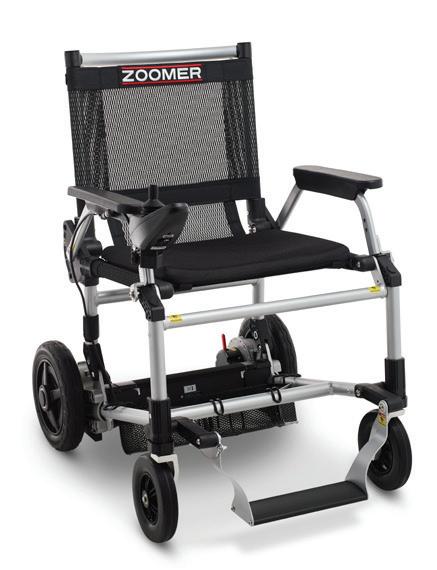

motor it can go up to 6 miles an hour and its rechargeable battery can go up to 8 miles on a single charge. With its low center of gravity and inflatable tires it can handle rugged terrain and is virtually tip-proof. Think about it, you can take your Zinger almost anywhere, so you don’t have to let mobility issues rule your life.
Why take our word for it? Call now, and find out how you can get a Zinger of your very own.
Call now and receive a utility basket absolutely FREE with your order.

1-888-782-6163
Please mention code 120073 when ordering.

Once in a lifetime, a product comes along that truly moves people. Introducing the future of battery-powered personal transportation . . . The Zinger.
In 1835, Pulaski County was one of two newly created northern Indiana counties that the state General Assembly named for Polish heroes of the American Revolution. The other was Kosciusko.
Count Casimir Pulaski was a Polish nobleman, soldier and military commander who has been called the “father of the American cavalry.” Though Pulaski deserved such an honor, one would have been hard-pressed to find a person of Polish descent in the area at the time of the county’s founding.
People of Polish descent may have been rare in northwestern Indiana at the time Pulaski County was named, but the county seat is named after a Native American word.
New settlers to the area in 1839 dubbed the county seat “Winamac,” which is a Potawatomi term for “catfish.” It should be noted that the Tippecanoe River flows through the heart of Winamac, which meant catfish would have been plentiful.
The Winamac Town Park is home to a large suspension bridge over the Tippecanoe River. The Veterans Memorial Swinging Bridge was dedicated July 4, 1923, and has since been a popular local attraction.
In 2020, the “Light Up Our Legacy Project” began to raise money to install LED lights on the bridge. The goal was reached, and the bridge underwent renovations through the early spring of 2023. The lights were unveiled July 3 in celebration of the bridge’s 100th anniversary.


Pulaski County is also home to multiple areas to view wildlife and enjoy nature, including the Winamac Fish & Wildlife Area, Tippecanoe River State Park and the JasperPulaski Fish & Wildlife Area. Located on more than 8,000 acres, the Jasper-Pulaski Fish & Wildlife Area is a notable stop for more than 10,000 sandhill cranes during their fall migration pattern.
FOUNDED: 1835
NAMED FOR: Count Casimir Pulaski
POPULATION: 13,402
COUNTY SEAT: Winamac
INDIANA COUNTY NUMBER: 66
Indiana Connection and Indiana’s electric cooperatives are proud to sponsor the Youth Power and Hope Awards program. Since 2009, the program has annually honored Indiana youth in grades 5-8 for their community service. Past winners’ community projects have included raising money for Riley Hospital for Children and donating toys for its patients, collecting coats for the less fortunate and providing police officers with stuffed animals to comfort children in crisis situations. Could a community-minded young person you know be one of our next winners? Encourage him/her to apply!
Up to five qualified candidates will receive $500 and be featured in an upcoming issue of Indiana Connection, among other recognition.
For more information and to complete an application, visit indianaconnection.org/ youthpowerandhope Deadline to apply is Monday, Oct. 2.
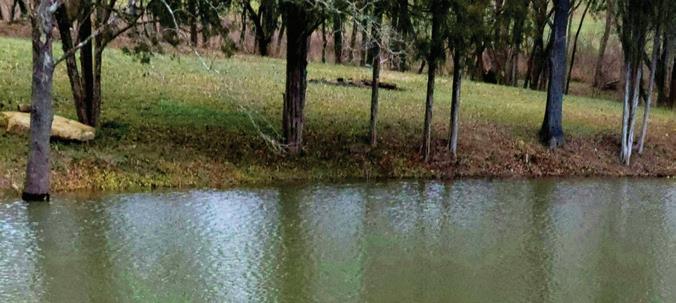
We know how to find all water leaks underground. Call us!

812-987-4119
Serving IN, OH, IL, KY & TN
www.WhatsBelow.com

Our Marketplace offers maximum exposure for your business or organization at a minimal cost. Please contact Cheryl Solomon, 847-749-4875 or cheryl@amp.coop, for other small business advertising opportunities in Indiana Connection.
When planning home improvement projects — especially those that involve electrical work — do you know when to DIY and when to hire a professional?
Homeowners wanting to do it themselves can tackle many types of projects, but when safety becomes an issue, seek a professional with appropriate training, equipment and insurance. “Painting a bedroom may be an easy weekend project, for example, but climbing a tall ladder for an exterior paint job can be a safety risk,” noted Jon Elkins, vice president of safety, training and compliance at Indiana Electric Cooperatives.
To avoid electrocution and fires, most electrical work should be left to professional licensed electricians. Home rewiring, breaker box replacement and adding a large number of electrical outlets are among tasks you should consider leaving for the pros. Faulty electrical installations can lead to large additional expenses and even injuries or death.
If you’re doing work yourself with power tools, be careful. Annually, 8% of electrocutions in the U.S. are attributed to improper use of power tools. The Electrical Safety Foundation International offers the following safety tips:
• Use ground fault circuit interrupters (GFCIs) with every power tool to protect against electrical shock.
• Never use power tools near live electrical wires or water pipes.

• Use extreme caution when cutting or drilling into walls where electrical wires or water pipes could be accidentally touched or penetrated.
• Do not use power tools without the proper guards.
If your home improvement includes additional living space and/or added outlets, make sure your home electrical panel and service can handle the added load. In addition, verify that all electrical work is done by a certified, licensed electrician and that local permits, if needed, are secured.
Call 811 several days in advance if any digging is part of the project so the appropriate utilities serving your area can determine if they have buried lines of service in the scope of your project and mark where those are located.
Whether your home improvement is being done by yourself or a contractor, contact your electric utility ahead of time if your meter must be removed or relocated to accommodate additions or renovations (such as home additions, fences, decks or patios) to your property. In almost all areas it is illegal for a homeowner to break the seal on a utility meter or pull or set a meter. Aside from being dangerous without protective gear, there could be fines involved if you don’t call the utility first to explain the situation.
Remember, you should only tackle DIY home projects within your skill and comfort level. “For projects that require extensive electrical work, we strongly recommend you hire a licensed, qualified electrician for assistance,” said Elkins.

Remember when…
Think about the things you loved to do that are dif cult today — going for a walk or just sitting comfortably while reading a book. And remember the last time you got a great night’s sleep?
As we get older, health issues or even everyday aches, pains and stress can prevent us from enjoying life. So what’s keeping you from having a better quality of life?
Check all the conditions that apply to you.
Arthritis Dry Skin

Insomnia Anxiety
Diabetes Mobility Issues

Lower Back Poor Pain
Then read on to learn how a Safe Step Walk-In Tub can help. Feel better, sleep better, live better
A Safe Step Walk-In Tub lets you indulge in a warm, relaxing bath that can help relieve life’s aches, pains and worries.
A Safe Step Tub can help increase mobility, boost energy and improve sleep.

It’s got everything you should look for in a walk-in tub:
• Heated Seat – Providing soothing warmth from start to nish.
• MicroSoothe ® Air Therapy System – helps oxygenate and soften skin while offering therapeutic bene ts.

• Pain-relieving therapy – Hydro massage jets target sore muscles and joints.
• Safety features – Low step-in, grab bars and more can help you bathe safely and maintain your independence.





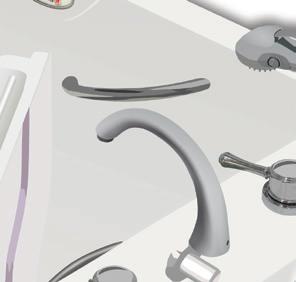

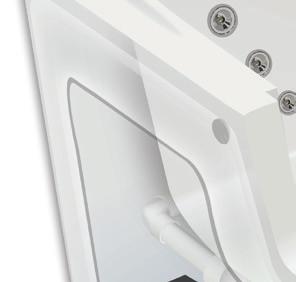


• Free Shower Package – shower while seated or standing.


Keltie Sullivan is a culinary professional with decades of restaurant experience, including a ten-year run at her eponymous bistro Keltie’s in Westfield until 2012. Keltie said that she didn’t plan on opening another restaurant after closing Keltie’s, but when she saw the existing Angry Donkey storefront on Main Street in Michigantown en route to visit her mother in Delphi, she eventually had a change of heart. Keltie purchased the Angry Donkey in 2018 and has since made it into her own flourishing restaurant endeavor.
So, how exactly did the space get its equine-inspired moniker?
Keltie explained that “the restaurant used to be called the Michigantown House, where the locals would come in and mostly drink. It was nicknamed the ‘mule barn’ years and years ago, so the previous owners before me were trying to come up with a name and kept going back to ‘The Mule.’ Eventually, the name ‘donkey’ came up, and they loved the ‘Angry Donkey.’”
Keltie investigated how much it would cost to change the signage, and after she found out that the price would be “upwards of $30,000,” she decided to stick with the existing name and never look back.

Angry Donkey’s website describes the eatery as “a fullservice, family-friendly restaurant offering a wide variety of Hoosier-inspired cuisine.” Once inside, you’ll find a casual but well-thought-out atmosphere. There is a large, beautiful wooden bar flanked by big-screen TVs, and the dining rooms are spacious.


The real reason you’re here, though, is the scrumptious food. Almost everything is made from scratch, including
Keltie’s signature “beggar’s purse,” described as chicken salad with blue and cheddar cheeses baked in puff pastry and served on a bed of cranberry compote. There is also the “Triple PIG,” featuring a pork burger loaded with pulled pork and bacon jam, topped with pepper jack cheese and slaw on Texas toast. Keltie’s smoked chicken wings, splashed with hot sauce, are also crowd-pleasers. In addition, the weekly specials are worth investigating, including the dessert offerings.
The bar is stocked, and yes, there is a mule on the current cocktail menu — made with vodka, ginger beer and lime juice. You’ll also find “The Keltini,” a blend of Grey Goose vodka, crème de cassis and a splash of pineapple juice with a “lemony” rim.
Word-of-mouth is consistently positive regarding Keltie’s delicious food and welcoming hospitality, so if you’d like to try Angry Donkey for yourself, you may want to make a reservation, especially on weekend nights. The restaurant is closed on Mondays and Tuesdays, but you can visit Angrydonkeymtown.com for up-to-date hours and to reserve a table.
“The renown of Italy’s jewelry, with its sensual beauty and extraordinary craftsmanship, is founded on the goldsmithing skills passed down through generations.” – The New York Times

Iguess I was a little bored. For the past hour, I’d been on the phone with Daniele, the head of my office in Italy, reviewing our latest purchases of Italian gold, Murano glass and Italian-made shoes and handbags.
“Daniele,” I said, “What is the hottest jewelry in Italy right now?”


His reply? Woven gold bracelets studded with gems. He texted me some photos and I knew immediately that this was jewelry that Raffinato just had to have.
The best part about these bracelets? The price. Because of our longstanding connections in Arezzo, the mecca of Italian goldsmithing, we can offer both bracelets together for just $99, a fraction of the price you’ll pay anywhere else for similar jewelry.
Order today. These bracelets are one of our hottest sellers this year, and with disruptions in the supply chain, we can only guarantee that we have 1,273 861 of these bracelets on hand for this ad.
Make the next gift you give your loved one a trip to Italy with the Italiano Fantasia Bracelets, stunning accessories that are sure to turn heads.

Jewelry Specifications:
Presenting the Italiano Fantasia Bracelets, two designs that are prime examples of Italy’s finest artisanship. Each of these bracelets includes more than 20 brilliant cut gems of DiamondAura®, our Ultimate Diamond Alternative®, in a setting finished with 18 karat Italian gold.
What is DiamondAura®? Why, it’s a sparkling marvel that rivals even the finest diamonds (D Flawless) with its transparent color and clarity: The book “Jewelry and Gems: The Buying Guide,” praised the technique used in our diamond alternative: “The best diamond simulation to date, and even some jewelers have mistaken these stones for mined diamonds,” it raved.
• Made in Arezzo, Italy. 18k gold finish

• DiamondAura®, the Ultimate Diamond Alternative®




• Fit wrists up to 7 ¼"
Italiano Fantasia Bracelet Collection
A. X Bracelet (¼ ctw) $399 $59* + S&P Save $340
B. Woven Bracelet (⅓ ctw) $299 $59* + S&P Save $240 Set of Both $698 $99* + S&P Save $599



*Special price only for customers using the offer code.


Alicia Unger, North Manchester, Indiana
3 tablespoons extra-virgin olive oil
1 medium yellow onion, finely chopped
2-4 minced garlic cloves, to taste
1 (24-ounce) jar pasta sauce
1 (14½-ounce) can diced tomatoes
2½ cups chicken broth
16 ounces uncooked spaghetti, broken in half Parmesan cheese, to taste
Heat a deep, wide skillet or a stock pot over low/medium heat. Add olive oil, onion and garlic and cook until onion is softened, about 3-4 minutes. Add pasta sauce, diced tomatoes and chicken broth, stirring to combine. Increase the heat to medium-high and bring mixture to a boil. Stir in spaghetti, then reduce heat to a simmer. Cover and cook for 11-12 minutes, stirring every 2-3 minutes to prevent pasta from sticking to the bottom of the pan. Serve topped with Parmesan cheese, if desired.
Patricia Piekarski, Harvey, Illinois
1 pound ground beef
1 small onion, chopped
1 (28-ounce) can diced tomatoes, undrained
1 (14½-ounce) can beef broth
1 cup frozen mixed vegetables
2 cups instant rice, uncooked
¾ cup grated Parmesan cheese
In a large skillet, brown ground beef and onion; drain. Add tomatoes, broth and vegetables; stir and bring mixture to a boil. Stir in rice and cheese, cover, then remove skillet from heat and let stand for 5 minutes. Sprinkle with additional Parmesan cheese if desired and serve.


Glenda Ferguson, Paoli, Indiana
1 pound Italian sausage links
10 ounces frozen pepper and onion blend
3 medium tomatoes, chopped
Garlic salt (or salt substitute) and pepper, to taste
4 sandwich buns/rolls
Cook sausages in a large skillet over medium heat until no longer pink, about 10 minutes. Drain. Remove the sausages and slice them into halfinch pieces, then return to the pan. Add the frozen vegetables. Cover for 10 minutes until vegetables are tender. Add tomatoes and seasonings and cook for 2 minutes. Hollow out the bottom of the buns/rolls. Fill with the cooked sausage mixture and serve.
There’s no denying that people — mostly women — are on a mission to discover the best way to eliminate fine lines and wrinkles permanently. The $14 billion dollars spent on aesthetic procedures in 2021 alone is a clear indication of that fact.

But now science appears to be offering a simpler solution. It’s a special delivery technology adapted for skincare that gets superior results.
Known as advanced liposome technology, this powerful distribution system ensures that vital nutrients are delivered exactly where your skin needs them the most, providing your skin with maximum anti-aging benefits.
Al Sears, MD, of Palm Beach, Florida, recently released an anti-aging cream that adapts this breakthrough medical technology into the realm of skincare, and he’s struggling to keep up with consumer demand.
Dr. Sears is South Florida’s leading anti-aging pioneer. He has authored over 500 reports, scientific papers, and books on anti-aging. A frequent lecturer at global anti-aging conferences, Dr. Sears spoke at the WPBF 25 Health & Wellness Festival featuring Dr. Oz, along with special guest, Suzanne Somers. Thousands of people were in attendance as Dr. Sears discussed his latest anti-aging breakthroughs.
This powerful cream, known as Restore, keeps selling out faster than it’s produced — and people are raving about the effect it’s having on their skin.
“Within a few minutes of applying the cream, it visibly plumps out the under-eye area and my cheeks as well as those annoying lines that deepen as we age between the nose
and lips. It also felt like it was tightening and smoothing my skin at the same time. I definitely feel I look younger whenever I use it,” said Amy B., of Montville, New Jersey.
“The lines around my mouth and eyes are filled in and my skin is tightened. I love having younger-looking skin, so I will continue using Restore” raves Cathy C., of Florida.
The best part is that this cream has no adverse side effects, doesn’t require a doctor’s visit or prescription, and is 100% natural.
volume.”
When you apply liposome cream to your face, the liposomes in the skin cream work their way inside your skin, fuse with the skin cell membranes and then release their contents directly to the cells. Regular skin creams don’t have this capability.
The dermis is the underlying layer of skin that supplies nourishment and oxygen, and removes waste. In other words, it’s responsible for keeping your outer layer of skin healthy. Liposome technology is designed to support and nourish this deeper layer of skin by delivering nutrients directly to it.
“All of Restore’s powerful ingredients are encapsulated in a liposome shell — an organic container that carries the beautifying agents deep into the skin cells,” explained Dr. Sears.
“Restore’s liposome shell is composed of phosphatidylcholine or PC for short. While cell membranes repel water, they absorb PC because they’re actually made of it. As a result, Restore is delivered deep into the cell for maximum firming and
Once it’s penetrated the deeper layer of skin, Restore releases a unique blend of botanicals, vitamins and essential oils that reduces the appearance of fine lines and wrinkles, gives skin a more even tone, and moisturizes the interior layers of your dermal cells, firming and plumping your skin.
Restore’s first skin-enhancing agent is Madonna lily leaf stem cell extract. It helps produce an even-toned complexion. In a clinical study reported in the Journal of Cosmetic Dermatology, participants treated with this extract for 28 days showed improvements in skin luminance and tone around the eyes.
Restore is also loaded with vitamin C, which British researchers have found reduces both wrinkles and dryness. “In Restore we use magnesium ascorbyl phosphate, a more stable form of vitamin C that
doesn’t break down in liquid as does ordinary C,” explains Dr. Sears. “That means the antioxidant molecules stay intact within your skin cells where they can prevent damage from dangerous free radicals.”
This powerful formula also features guarana seed extract, coenzyme Q10, and avocado oil. Japanese researchers have also found that coenzyme Q10 supports production of the thin membrane that separates layers of your skin, and French studies have shown that avocado oil improves skin cell metabolism and enhances skin thickness.
To secure the hot, new Restore formula, buyers should contact the Sears Health Hotline at 1-800-6820708 TODAY. “It’s not available in retail stores yet,” says Dr. Sears. “The Hotline allows us to ship directly to the customer.” Dr. Sears feels so strongly about Restore, all orders are backed by a 100% money-back guarantee. “Just send me back the bottle and any unused product within 90 days from purchase date, and I’ll send you all your money back.”
Call NOW at 1-800-682-0708 to secure your supply of Restore. Use Promo Code INRS823 when you call. Lines are frequently busy, but all calls will be answered!
“Advanced liposome technology ensures that vital nutrients are delivered exactly where your skin needs them the most.”

ittle Leaguers from Hagerstown won the hearts of Hoosiers all over the state last August when they advanced to the Little League Baseball World Series in Williamsport, Pennsylvania. They were Indiana’s first representatives at the World Series since their next-door neighbors from New Castle in 2012.

Indiana may not have a Major League Baseball team, but true to the state’s reputation as an amateur sports capital, Hoosiers embrace and foster the love of sports at all basic levels. That’s why the 3-year-old Little League Baseball Central Region Headquarters Complex in Whitestown is a fitting and welcomed addition to the Indiana sporting landscape.
“One of the things that makes Little League unique is that this is the purest you’ll ever see sport. It’s just the purest emotion,” said Stu Hartenstein, Little League’s Central Region director. “Why it’s on TV, and why people are so drawn to it, is they want the innocence of youth sports. And it doesn’t matter what division it is. That’s what makes it so magical.”
Hagerstown punched its ticket to the World Series last year by winning the Great Lakes Region Tournament at the Central Region’s field. During the first two weeks of August, the complex on the northwestern outskirts of Indianapolis will once again host the best Little League Baseball teams from 13 states in two regional tournaments. The winners of the two regions, the Great Lakes and Midwest, will then advance to the Little League World Series in Williamsport.
“It’s just awesome to be able to afford youth the opportunities here to make some lifelong memories,” Hartenstein said. “You ask a lot of our volunteers who have been with the organization 50, 60, 70 years, why they keep coming back, and a lot of it is just continuing to help create for today’s youth the same memories and relationships that have endured throughout their lives.”
At 36, Hartenstein has been involved with Little League ever since he was a tot, beginning with T-ball, continuing with Little League, then volunteering as an umpire for many years, until finally taking one of the few paid positions with the organization. “That connectivity to community, to people, is something that is challenged in today’s society,” he said, “and we are one of the staples in our country that still try to allow that to be the heartbeat.”
As with all Little League events, there’s no admission charge to the ballpark at Whitestown or even Williamsport. Seating, though limited, is generally open in the grandstand. Lawn chairs are welcomed along the fence lines, and concessions are moderately priced.
The notion for a baseball league for kids, with their own uniforms and
proportionately sized equipment and field, originated in 1938 in Williamsport. Carl Stotz, a lumberyard clerk, told of watching his nephews playing a game of catch when the idea came to him. The next spring, Stotz gathered local sponsors and organized a league of three teams — Lundy Lumber, Lycoming Dairy and Jumbo Pretzel — and drew up a field essentially two-thirds the dimensions of the big leagues. Instead of 90 feet between the bases, his “little league” had 60; instead of 60 feet from the pitcher’s mound to home, his was 46 feet. On June 6, 1939, Stotz’s creation, Little League Baseball, played ball for the first time, with Lundy Lumber winning 23-8 over Lycoming Dairy.
Within just a decade, and despite the nation being focused on winning World War II in the middle of it, Little League had spread out from central Pennsylvania across the United States. Within another 10 years, it
had gone international. In 1957, the first team from outside the U.S. — Monterey, Mexico — won the Little League World Series.
Today, Little League is played in some 6,500 communities by some 2 million players with 1 million adult volunteers. Little League is in every U.S. state and more than 80 countries. It is more than just baseball for boys and girls ages 10-12. Today, it includes programs and divisions of baseball and softball for all youth ages 4 to 16, including youth with special needs.
While Williamsport remains the headquarters, Little League has divided into five administrative regions in the U.S.: East — located in Bristol, Connecticut; Central — in Whitestown; Southeast — in Warner Robins, Georgia; Southwest — in Waco, Texas; and West — in San Bernardino, California. International regions are in Puerto Rico, Canada, South Korea and Poland.
The Whitestown facility serves as the administrative hub for Little League Baseball and Softball activities for the five states in the Great Lakes Region (Ohio, Indiana, Illinois, Kentucky and Michigan), and eight in the Midwest Region (Wisconsin, Minnesota, Iowa, Missouri, Kansas, Nebraska, North Dakota and South Dakota). How states land in their respective regions for competition depends on geography and participation numbers; Little League strives to maintain equal representation and a competitive balance for each region, Hartenstein said.

Before reaching the region tournament, the teams, composed of all-stars from each community’s local league, will have already won their local district and respective state tournaments held in July. (Because of this issue’s printing deadline, Indiana Connection is unable to include this year’s Indiana representative in this article). They then compete in the region tournament representing their state. The two regional champs decided in Whitestown will go on to the Little League World Series later this month in Williamsport. There, they will compete against eight other regional champions from within the U.S. and 10 international regional champs.
When Little League established its regional headquarters in 1989, the Central Region was located in Lawrence on the east side of Indianapolis. By the mid-2010s, however, the original location was seeing some problems.
The complex was too large, noted Hartenstein, which made it harder to maintain for the volunteer organization. Hartenstein and one other staff member are currently the only two full-time employees for the Central Region. In addition, the region director at the time, Nina Johnson-Pitt, cited high crime and deterioration of the area as another reason Little League began seeking a new location.
While the Central Region administration moved to a small office
Little League Baseball’s Central Region complex will host the champions representing 13 states in two regional tournaments early this month. Both the Great Lakes Region Tournament and Midwest Region Tournament will be held concurrently at the Whitestown complex to determine the two to move on to the Little League World Series later this month in Williamsport, Pennsylvania.
Game 1: Michigan vs. Ohio
Aug. 5 • 10 a.m.
Game 2: Illinois vs. Indiana
Aug. 5 • 7 p.m.
Game 3: Winner 1 vs. Kentucky
Aug. 6 • 4 p.m.
Remaining games: Aug. 6-9
Game 1: Kansas vs. North Dakota
Aug. 4 • 10 a.m.
Game 2: Wisconsin vs. Missouri
Aug. 4 • 1 p.m.
Game 3: Minnesota vs. Nebraska
Aug. 4 • 4 p.m.
Games 4: Iowa vs. South Dakota
Aug. 4 • 7 p.m.
Remaining games: Aug. 6-11
Winners of both regions advance to the Little League World Series in Williamsport, Pennsylvania, Aug. 16-27
The Central Region complex is at 7185 S. Indianapolis Road, Whitestown, IN 46075. For full schedules and details, visit: littleleague.org/central
in Carmel, the regional tournament games were held in the interim at the new Grand Park Sports Campus in Westfield, Fishers High School and Zionsville High School. Little League, with its special field dimensions, required tweaking to fields not made for Little League. In addition, the field required more spectator room for families and fans and areas for television cameras since ESPN had begun televising even the regional tournament games. Not only were there the field aspects, but the region facility also needed room to host training events for league officials, coaches and umpires throughout the year.
A search for a new facility location included sites near Indianapolis and out of state.
In 2020, Little League and the Whitestown Redevelopment Commission came to an agreement on a 15-acre site on a fast-growing corridor road parallel to Interstate 65. The complex, served electrically by Boone REMC, includes an administration building, gift shop,
concession stand, restrooms, batting cages and a regulation-size, lighted Little League field with stadium seating, bleachers and a press box.
In addition to the Town of Whitestown, the Boone County Convention and Visitor’s Bureau also stepped up to bat for the facility. “The Boone County Convention and Visitor’s Bureau made a commitment to attracting Little League to Boone County,” said Allyson Gutwein, the executive director of the Boone County CVB.
“Little League is so important because it really fulfills multiple needs of tourism and placemaking. It’s great for the community. It’s great for attracting people who want to come and see the tournaments. Little League is a great example of what we really want to see in those tourist attractions, and we want to make sure that they know they’re supported,” Gutwein said.
The facility opened in July of 2021, during the pandemic, which brought strict protocols and limited attendance to the softball and
baseball tournaments. Last year, the first full-scale tournaments for the new complex were held. “We were very pleased with our attendance,” Hartenstein said, adding, “So we anticipate probably having a record year with attendance.”
Since there are no tickets, he said, attendance is not tracked closely. “Sometimes that’s dependent upon how many volunteers we have available to help us. Attendance fluctuates day by day. Certainly, the Great Lakes games are more well attended simply because they’re closer. If we had a local team, like Hagerstown, there were nights where we had 5,000 people here.”
Whatever the attendance, the folks at the Boone County Convention and Visitor’s Bureau are ready to wave the fans in.
“We’re excited to welcome guests from all over the Midwest, the United States and all over the world in order to see this,” said Gutwein, “because not only are people able to see this locally, but it’s being broadcast
Hagerstown, wearing the Great Lakes Region uniforms, gathers for a team prayer at last year’s Little League World Series in Williamsport.
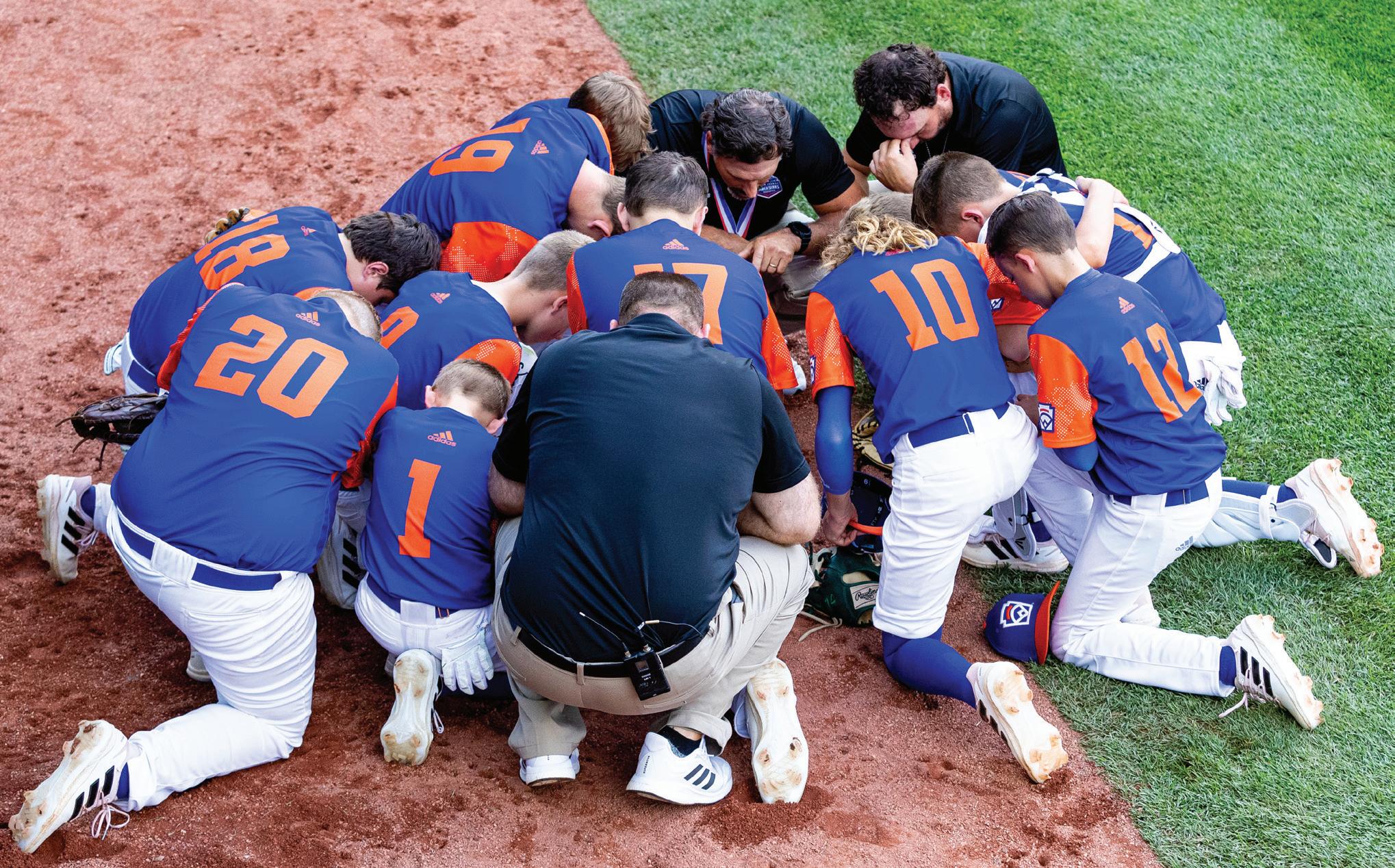
globally on multiple networks. And that really is exciting because we know that people are seeing our community. That’s fantastic for the local economy, our businesses and all of those that are involved in Little League.”
Hartenstein, a native of Ohio, wasn’t involved in the decisions that kept Little League Baseball in central Indiana when it was looking for a new facility. But he appreciates what Indiana has had to offer Little Leaguers and their families who come for the tournaments.
“A lot of our communities across the nation really embrace Little League baseball — its values, what it tries to instill in local communities and what it really means to develop young athletes. And Indiana is certainly one of the states in the country that very much caters to the hospitality industry, as well as youth sports. So, there’s kind of a perfect storm here in
1938:
Carl Stotz creates the idea for Little League baseball in Williamsport, Pennsylvania.

June 6, 1939:
First Little League game is played in Williamsport.
1947:
The first Little League World Series is played.
1949:
Little League spreads to 307 leagues across the United States; the first team from Indiana (Lafayette) plays in the Little League World Series.
1951:
First permanent league outside the U.S. is established in British Columbia, Canada.
1955:
Indiana. There is a huge buy-in and interest here.”
He also credits county and local governments and the county CVB, especially the Town of Whitestown, for welcoming Little League. “They have gone above and beyond to not only welcome us but continue to work with us. We have an awesome partnership with them. Indiana is a special place for Little League because we get the town embracing the values of Little League, what it stands for and what it can bring.”
We’ll all find out in a couple of weeks after the Great Lakes Region Tournament whether an Indiana team plays in Williamsport again this year. But win or lose at the local community ballpark, Whitestown or Williamsport, Little Leaguers can take heart knowing that Hoosiers welcome them and root for them — and all that they play for.
Richard G. Biever is senior editor of Indiana Connection.
Little League expands to all 48 U.S. states.
1957:
A team from Monterey, Mexico becomes the first team from outside the U.S. to win the Little League World Series.
1974:
Little League changes rules to allow girls to play alongside boys.
1989:
Little League divides into administrative regions. The Central Region is headquarted in Indianapolis.
June 26, 2021:
The Central Region opens its new 15-acre complex in Whitestown.
August 2022:
Representing Indiana, Hagerstown wins the Great Lakes Region and becomes the 16th team from Indiana to advance to Williamsport.
Aug. 4-11, 2023:
Central Region facility to host Great Lakes and Midwest tournaments.
One of the things that makes Little League unique is that this is the purest you’ll ever see sport.
STU HARTENSTEIN, Central Region directorPhoto by Richard G. Biever
A re-discovery from the 1600s is causing a frenzy within the medical system. A weird herb has been shown in six clinical studies (and by thousands of users) to be very effective for leg and feet pain, burning and numbness – with no side effects – at low cost – and with no doctor visit or prescription needed.
This weird herb comes from a 12-foot tall tree that grows in Greece and other countries in Europe. In the old days, people noticed that when their horses who had leg and feet problems ate this herb – it was almost like magic how quickly their problems got much better. They called it the “horse herb”. Then somehow with Europe’s ongoing wars, this herbal secret got lost in time.
“It works for people who’ve tried many other treatments before with little or no success. Other doctors and I are shocked at how effective it is. It has created a lot of excitement” says Dr. Ryan Shelton, M.D.
Its active ingredient has been put into pill form and improved. It is being offered in the United States under the brand name Neuro�lo.
Researchers have found an herb originally from Greece that has been shown in six placebo-controlled medical studies (543 participants) to be effective and safe. This natural compound strengthens blood vessel walls and reduces swelling to stop the pain and suffering.
Says Dove Medical Press & Development and Therapy

... meaning, discomfort, water retention, leg swelling, tiredness and circulation improved in 95% of test subjects

Poor blood �low in the legs and feet is one of the common problems that develops as we age. Millions of Americans suffer from neuropathy and chronic venous insuf�iciency (CVI), edema, and other leg/ feet problems – millions have these but are undiagnosed.
Today’s treatments don’t work for a high percentage of people – and they have side effects that make them hard to tolerate or that people do not want to risk. This includes prescription drugs, over the counter pain pills, surgery and compression.
Here’s why you have pain now: Your arteries have weakened. Your arteries can’t carry enough blood, nutrients and oxygen down to your legs and feet. This damages your nerves and causes your burning, tingling and numbness.

The herbs in the pill Neuro�lo strengthen your arteries that carry blood, nutrients and oxygen to your feet and legs. It improves your circulation so oxygenated blood goes to the nerves and repairs them. This makes your nerves grow stronger so your pain fades away and your legs and feet feel much younger again.
Katerina King from Murrieta, California says, “I had hands and feet tingling and snapping and burning feeling. It made my life very uncomfortable. I had a hard time walking, my legs felt like they each weighed 50 pounds. Once I got in my car and my feet felt so heavy I couldn’t even drive the car. With Neuro�lo I have no more tingling, cold or burning painful legs and feet. It went away.”
“Now I �inally have a natural solution I can recommend to my patients who suffer from leg and feet problems and pain. I’m delighted because previous treatments were not effective, but Neuro�lo has worked for every one of my patients with no side effects” says Dr. Eric Wood, N.D.
WORKS IN AMAZING WAY: A prickly plant was used in Europe in the 1600s to revitalize ailing legs. Lost over the centuries, it is now making a comeback as US doctors rediscover its impressive results – sending relief to thousands of users with:

• Burning, Tingling, Numbness
• Swollen, Achy Feet
• Painful Legs & Feet
• Varicose Veins
for safe and fast relief,” said Dr. Wood, a Harvard trained doctor who has appeared on award winning TV shows.
Now you can get a good night’s sleep - peaceful, restful sleep – with no pain, tingling, zinging, itching or zapping. Improve your balance and coordination. No side effects – safe to take with other medications. Enjoy your favorite activities and hobbies again. Be more active, have more fun, enjoy life more. Don’t risk irreversible damage to your feet and hands. Don’t get worse and wind up in the hospital or a nursing home. Neuro�lo is GUARANTEED to work for you – or you will get full refund with a 90-day unconditional money-back guarantee. It is NOT sold in stores or online. No prescription or doctor visit is required.
This is the of�icial release of NeuroFlo for readers of Indiana Connection. Therefore, everyone who calls within the next 10 days will receive 50% OFF their �irst order. A toll-free hotline number has been set up for local readers to call for this 50% OFF savings. The number will be open starting at 7:00 am today and only for the next 10 days.
Swollen legs are a warning sign. They mean blood and fluid is forced out of the blood vessels into the surrounding tissue. This causes non-stop pain. This is where Neuroflo’s active ingredient is such a big help.
Dr. Ryan Shelton, M.D. says “This is new and different. It works for people who’ve tried many other things before. It is natural with no side effects. Don’t give up hope for your leg and feet pain, burning, tingling and numbing. This pill is working for countless people after other treatments have failed them. I highly recommend it.”
“Neuro�lo is a terri�ic choice for people with leg and feet issues. The clinical trials in support of this herb show it is very effective
All you have to do is CALL TOLL FREE 1-855-707-8427 and provide the operator with the special 50% OFF discount approval code: NEF158.
Important: Due to Neuro�lo’s popularity and recent media exposure on ABC, CBS and FOX NEWS, phone lines are often busy. If you call and do not get through immediately, please be patient and call back. Those who miss the 10 day deadline for 50% OFF will have to pay more for Neuro�lo.
If your tired, achy legs and feet are preventing you from moving easily... Now, a prickly herb has been discovered to….
Inthe blockbuster film, when a strapping Australian crocodile hunter and a lovely American journalist were getting robbed at knife point by a couple of young thugs in New York, the tough Aussie pulls out his dagger and says “That’s not a knife, THIS is a knife!” Of course, the thugs scattered and he continued on to win the reporter’s heart.
Our Aussie friend would approve of our rendition of his “knife.” Forged of high grade 420 surgical stainless steel, this knife is an impressive 16" from pommel to point. And, the blade is full tang, meaning it runs the entirety of the knife, even though part of it is under wraps in the natural bone and wood handle.
Secured in a tooled leather sheath, this is one impressive knife, with an equally impressive price.

This fusion of substance and style can garner a high price tag out in the marketplace. In fact, we found full tang, stainless steel blades with bone handles in excess of $2,000. Well, that won’t cut it around here. We have mastered the hunt for the best deal, and in turn pass the spoils on to our customers.
But we don’t stop there. While supplies last, we’ll include a pair of $99, 8x21 power compact binoculars, and a genuine leather sheath when you purchase the Down Under Bowie Knife
Your satisfaction is 100% guaranteed. knife in your hands, wear it on your hip, inspect the impeccable craftsmanship. If you don’t feel like we cut you a fair deal, send it back within 30 days for a complete refund of the item price. Limited Reserves. A deal like this won’t last long. We have only 1120 Down Under Bowie Knives for this ad only. Don’t let this beauty slip through your fingers at a price that won’t drag you under.
Stauer® 8x21 Compact Binoculars

-a $99 valuewith purchase of Down Under Knife
What Stauer Clients Are Saying About Our Knives

“This knife is beautiful!”
— J., La Crescent, MN
“The feel of this knife is unbelievable...this is an incredibly fine instrument.”
— H., Arvada, CO
BONUS! Call today and you’ll also receive this genuine leather sheath!
Down Under Bowie Knife $249* Offer Code Price Only $99 + S&P Save $150
1-800-333-2045
Your Insider Offer Code: DUK379-01

You must use the insider offer code to get our special price.

Rating of A+
14101 Southcross Drive W., Ste 155, Dept. DUK379-01 Burnsville, Minnesota 55337 www.stauer.com
*Discount is only for customers who use the offer code versus the listed original Stauer.com price. California residents please call 1-800-333-2045 regarding Proposition 65 regulations before purchasing this product.

• Etched stainless steel full tang blade ; 16” overall
• Painted natural bone and wood handle • Brass hand guards, spacers & end cap • Includes genuine tooled leather sheath
Stauer… Afford the Extraordinary

This 16" full tang stainless steel blade is not for the faint of heart —now ONLY $99!
While many children of all ages were relieved to be out of school for the summer, there were several deserving students from Hoosier Energy member cooperatives who were looking ahead to the 2023-24 school year.
That’s because a total of 14 cooperatives, 13 in the state of Indiana, awarded scholarships to 90 students this year, surpassing last year’s total of 86 awards.
There were three recipients of statewide awards this year. Alivia Hopper of Orange County REMC and Ethan Haenlein of South Central Indiana REMC each received $1,000 Indiana Electric Cooperatives Managers’ Association Scholarships,

and Bree Vollman of Wayne-White Counties Electric Cooperative received the Thomas H. Moore Illinois Electric Cooperatives Memorial Scholarship for $2,000. The remainder of the scholarships were awarded by local cooperatives — Bartholomew County REMC, Clark County REMC, Harrison REMC, Henry County REMC, Jackson County REMC, JCREMC, Orange County REMC, RushShelby Energy, South Central Indiana REMC, Southeastern Indiana REMC, Southern Indiana Power, Wayne-White Counties Electric Cooperative, Whitewater Valley REMC and WIN Energy REMC.
Some other notable scholarship winners were Laney Ruiz of
Columbus North High School, who received the $5,000 Alex Barkes Memorial Scholarship from Bartholomew County REMC, and Emily Miller of Jeffersonville High School, who was awarded the $2,500 Cindy Hockensmith Memorial Scholarship from Clark County REMC. Ailyn Hendricks of Franklin Community High School and Micah Robertson of Center Grove High School each received $2,000 academic scholarships from JCREMC. The remainder of the scholarships awarded ranged from $500 to $1,000.
Hoosier Energy and its member cooperatives are proud to invest in the future by helping jumpstart these students’ educational journeys.
Continued from page 7
Art Nordhoff Jr. earned his undergraduate degree in accounting from the University of Notre Dame, and then his law degree from Indiana University. After practicing accounting law in Indianapolis for two years, he came home to Jasper in 1967 with his wife, Patty, and joined his dad’s law firm.
As Nordhoff Sr. reached his 60s, he began moving much of his workload to his son. By 1972, Art Nordhoff Jr. became the REC attorney. Assuming his father’s workload kept the young Nordhoff busy. “I had three of the county’s four school corporations, plus I had a school corporation in Warrick County. And, I was representing the town of West Baden.”
After Nordhoff Jr. reached his latter 60s, he, too, began limiting his practice. Clients outside of Dubois County were the first ones he passed on to other lawyers.
Nordhoff Jr. said he’s proud of the legal work he and his father have done, helping build schools and bringing and maintaining reliable, not-for-profit power and light to the county. While the work seldom rose to dramatic courtroom fireworks, he said every electric cooperative attorney has had his or her share of cases such as territorial protection. “When there’s a town involved, there’s arguing over territory.”
In addition to all the legal work, Nordhoff Jr. also assumed another job his father once held — county historian. That is another role he said he’ll be stepping away from. During his tenure, the Dubois County Historical Museum was established in the late 1990s. “I was involved in the organization of that museum. And it’s a very good museum. We like to say it’s the largest county museum in the
state. And the community has really supported us well.”
Dubois is one county that has always stood out in promoting its heritage. Though it’s named for a Frenchman, the county was built by immigrants from Germany. Nordhoff said that history is important to preserve and share. Folks need to know the story behind the black, red and gold striped flags and why they’re displayed every early August in Jasper. “Especially in small communities like this, … the entire county is pretty well tied into Germany.”
In retirement, Nordhoff and his wife plan to spend as much time as they can with their 15 grandkids and two great-grandchildren. The second great-grandchild arrived just a couple of months ago.
He said he knows he’ll miss his life’s work, but not necessarily the work itself. It’ll be the people — such as those at REC. “It’s a board that comes from all over the service territory,” he explained. “You get to meet new people all the time as directors are replaced. They bring the problems they have in their community to the table. It’s a good bunch. You get awfully close to those fellows after a while. I’ll miss that.”
“The ‘Arthur Nordhoff’ name has played such an integral role in Dubois REC’s past and present. The Nordhoffs have been associated with the REC ever since there has been a Dubois REC and have been a resource for counsel and leadership,” said Brad Knies, board president. “Art will always be a friend of Dubois REC. On behalf of the board, I want to say a sincere ‘thank you’ for the dedication and hard work he and his father provided, and we wish him all the best in his retirement.”
Those who receive their electric service from Dubois REC can “round up” their monthly bill to the nearest dollar.
Donations from you and other cooperative consumers are collected and placed in a trust.

Because of electric cooperative consumers’ generous donations, organizations throughout Indiana are able to make necessary improvements to benefit those in their communities.
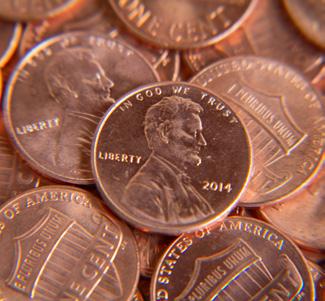
Although Shane Smith grew up on electric cooperative power lines 15 minutes from the Utilities District of Western Indiana REMC’s office in Bloomfield, he had no concept of what a cooperative was when he interviewed for an internship during his first year of college in 1994.
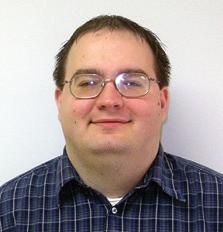
Smith knew he wanted to be an engineer of some sort and had a knack for that kind of work. And, after graduating, he knew he wanted to stay close to home.
After graduating in 1997, he came back to UDWI REMC’s office and was hired on as its first on-staff engineer.
“It was really a great position,” he said, especially for someone coming right out of college. “The opportunities it provided, the variety of work and the people you worked with — you couldn’t ask for better.”
Smith is now the chief operating officer for the cooperative and looks back on a career that he found rewarding.

“The biggest thing is the mission and the people: serving the
membership, serving the area where I grew up. I find that part of the role very fulfilling. Not being profit-focused really speaks to me,” he said. “Now that I’m in a little bit different role, I’m also helping the people who are coming up in the organization, mentoring them.”
In the mid-2000s, Smith admits he did get kind of a “seven-year itch.” A friend recruited Smith to join his consulting firm, and Smith left the REMC. But a year later, he was back. “I missed the co-op, I missed working for the members and I missed seeing things to completion.”
Coming back, Smith picked up where he left off and was given even more responsibility as UDWI grew in size. Returning to the coop allowed him to benefit from the many opportunities co-ops offer employees. He was able to expand his education and completed his MBA in the chief operating officer’s position he’s had since 2020. “Having those
opportunities, for somebody who loves to learn, is really rewarding.”
And coming back was like coming home to family. “The biggest things are the people that you work with — getting so close to them, they’re like family. That’s part of the job that you don’t really find at a lot of different places. We come together as a family in the hard times — for example, we just had a storm that caused widespread power outages. They’re hard on the employees, and they’re hard on the members. But when you have clarity of purpose and everybody’s coming together to get the job done, it’s a good feeling.”
SUBMIT YOUR FREE ONLINE TICKET TWO FULL WORKING DAYS BEFORE YOU DIG. YA DIG? Follow

